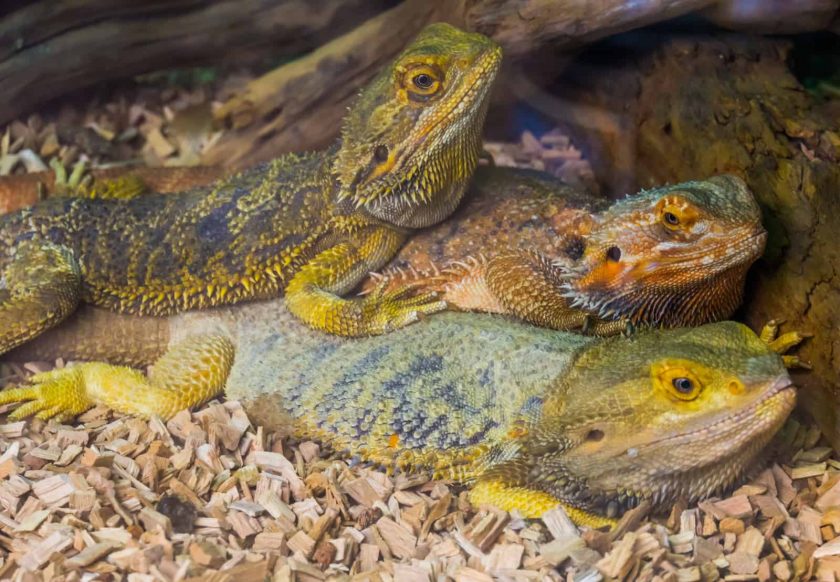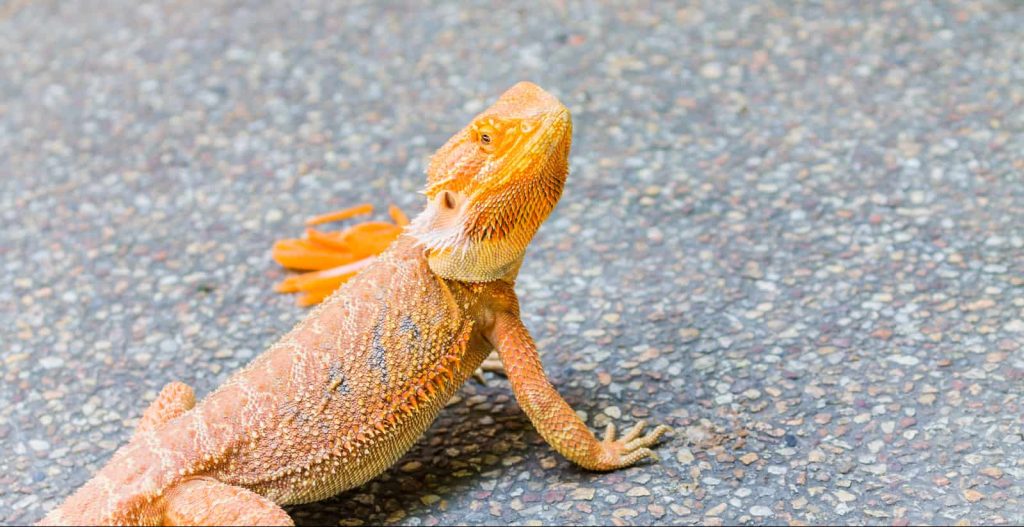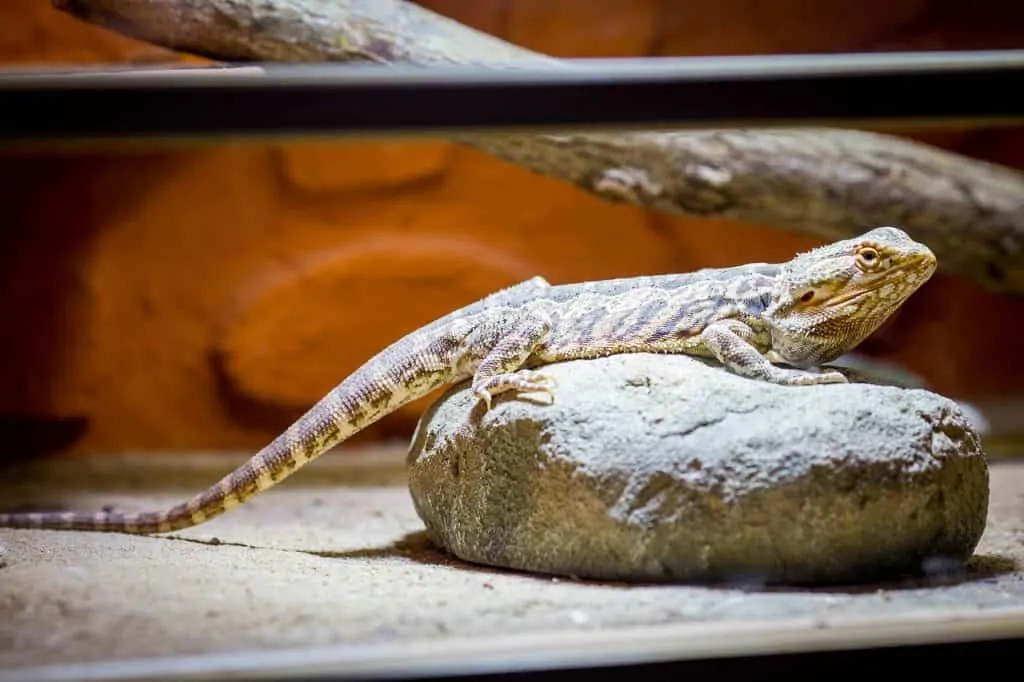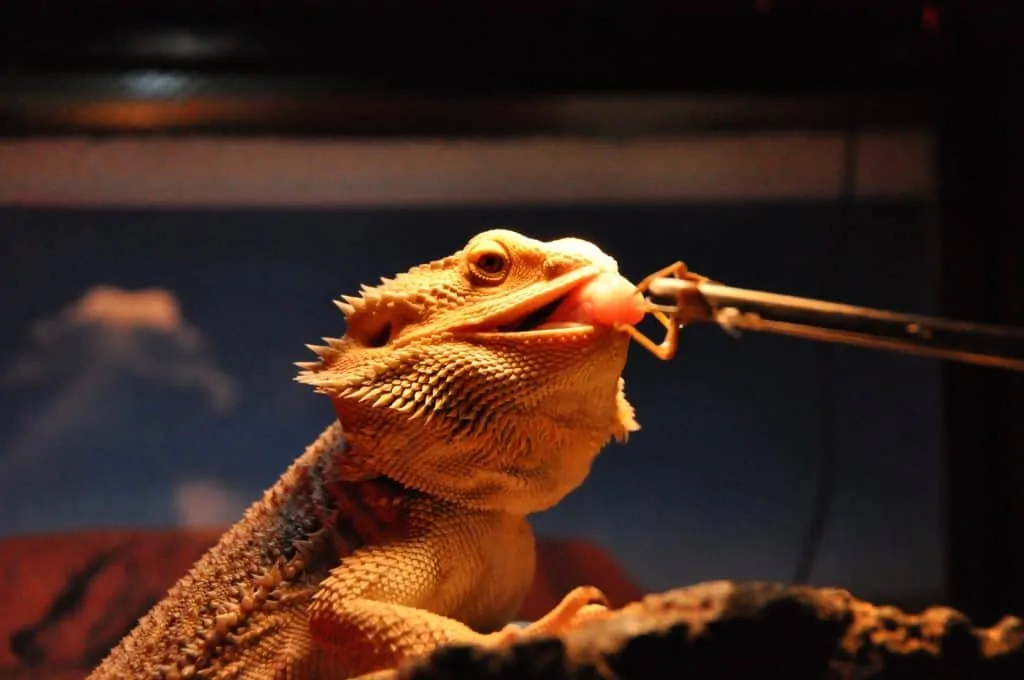So, you are interested in getting a bearded dragon. Join the club, as there is a reason why bearded dragons are so popular as pets. These fascinating reptiles can make for personable additions to your family.
But what about the costs? How much is a bearded dragon? How much is it to maintain one? The answer to that question is unclear as there is a lot of variability. A bearded dragon can cost anywhere from $35.0 to over $1,000!
Besides the cost of a bearded dragon, there is also a lot that goes on to maintain one. The enclosure, lighting, food, and other supplies can also vary greatly in price. The one-time setup costs, which include the enclosure and supplies, can range from $200 to over $1,000. Maintaining your bearded dragon can range from $50 to $100 monthly.
In this article, we will dive into the details of how much a bearded dragon costs. We will also show you ways to save a significant amount of money.
What Is the Cheapest Bearded Dragon?
A variety of factors will determine how much you pay to obtain a bearded dragon. These factors include the species, age, and where it is purchased.
Species and Age
There are a variety of bearded dragon species, with the common bearded dragon (Pogona viticeps) being the most commonly available. The cost for this species can range from $40 to $70 for babies, while adults can go for $150.
There are other species of bearded dragons, as well as morphs. One of the most expensive is the pure white Zero morph. It can range from $300 to $900.
Place of Purchase
Where you purchase your bearded dragon can also affect the price that you will pay. Bearded dragons can be purchased from:
- Breeders
- Pet stores
- Adoption organizations
Breeders
I believe that the best place to purchase a bearded dragon is from a reputable breeder. A professional breeder will provide a better quality of care for dragons than a pet shop. Further, they will generally offer lower prices than a pet store would. Many breeders specialize in morphs, but some breeders do raise common bearded dragons. You may save 10% to 20% from a breeder.
You can find breeders online or, better yet, attend a reptile expo. You can meet the breeders, view their specimens, and ask them questions.
Pet Stores
For many, going to a pet store may be the easiest way to buy a bearded dragon. The challenge with pet stores is that many of them do not have the knowledge of how to care for bearded dragons that a dedicated breeder would. Because of this, their beardies may not be in the best health. Additionally, pet stores often charge more than breeders.
Adoption Organizations
There are groups that accept bearded dragons from owners who no longer want them. These groups then look for others to adopt the lizards. You would pay a minimal adoption fee when going through such a group.
Are Bearded Dragons Expensive to Keep?
Bearded dragons are good pets and relatively inexpensive to keep compared to others, such as cats, dogs, or birds. Reptiles are ectothermic, meaning they cannot generate their own body heat like mammals. As a result, reptiles require less food than mammals or birds do.
Also, bearded dragons do not need to be vaccinated like dogs and cats do. For these reasons, beardies are less expensive. What bearded dragons do require is the right kind of lighting and temperature, which is an added expense.
The initial costs for housing your beardie can range anywhere from $200 to around a thousand dollars. The reason for this wide price range has to do with the type and size of the enclosure. After your beardie is all setup, your yearly cost will be between $100 to $200.
What Do You Need to Own a Bearded Dragon?
To get your bearded dragon all hooked up, you will need the following supplies:
The Enclosure
Your largest expense for your beardie will be its enclosure. There are different ways to house your pet, one of which is an aquarium. The tank size should be between 10-20 gallons, depending on the size of your beardie. A 10-gallon aquarium is sufficient for a hatchling, while the minimum for adults should be 20 gallons.
Bearded dragons require plenty of space, so you want to go for the biggest enclosure you can afford. Another reason for going for the biggest enclosure size is that it will be more expensive if you go for a smaller tank size and must upgrade in the future.
You can also build a wooden enclosure for your bearded dragon. The least expensive route is to go with a plastic storage tote. While they may not be aesthetically pleasing, they will do the job if you properly adapt them for the lighting, temperature, and ventilation these lizards need.
Lighting
The desert in the bearded dragon’s natural habitat. Because of this, they get a lot of sun exposure. You will need to duplicate these conditions by providing your bearded dragon with UVA and UVB lighting. If you are using a tote or making your own enclosure, you will also need the fixtures for the lighting.
When choosing a bulb, you want one that gives between five and seven percent UVB and UVA radiation. You can achieve this by purchasing full-spectrum fluorescent bulbs or mercury vapor bulbs.
Heating
Bearded dragons need a temperature gradient, meaning the enclosure has a range of temperatures. The warmest part of the enclosure should be between 95-110 degrees Fahrenheit, and the cooler part should be between 80-90 degrees Fahrenheit.
Basking Light
To achieve a temperature gradient, you will need a 100-watt basking light or heat bulb for every 40 gallons of tank. Some basking lights also give off UVA and UVB lighting.
Heat Emitter
The lights in your beardie’s cage will need to be turned off at night so your pet can maintain its photocycle. At night, the temperature should not go below 65 degrees Fahrenheit. Because of this, you may also need a heat emitter. A heat emitter will provide heat when the lights are off.
Thermometers and Timers
I recommend that you get two thermometers to monitor the temperature of the warmer and cooler parts of the enclosure. As an option, you can also get a timer to control the enclosure’s lighting instead of you having to turn it on and off manually.
Hygrometer
The humidity level for bearded dragons should be between 35-40%. To track the humidity level, invest in a hygrometer. A hygrometer will allow you to measure the humidity level in the enclosure.
Substrate
You will also need substrate in the enclosure. The substrate serves several functions. For one, it enhances the appearance of the enclosure. More importantly, the substrate will absorb the waste eliminated by your pet.
By absorbing waste, the substrate helps control the growth of bacteria. You will need to spot-clean the substrate daily and completely replaces it monthly.
It is important that you select the right kind of substrate. Some substrates, such as sand, may block the digestive tract of your beardie if swallowed. The following are recommended substates:
- Newspaper
- Alfalfa pellets
- Reptile carpets: A type of artificial grass that can be purchased at pet stores.
- Tile
Do not use the following:
- Sand
- Gravel
- Wood shavings
- Cat litter
Furniture
Furniture refers to items you place inside the enclosure to enhance your beardie’s well-being. They include:
Branches and Rocks
Branches and rocks will give your beardie something to climb on or for basking.
Food and Water Dishes
Food and water dishes will keep your pet’s food and water clean of substrate.
Hides
Hides are decorative structures that provide a place for your lizard to hide. They can be purchased at most reptile stores.
A Note About Bearded Dragon Kits
Bearded dragon kits are available in the marketplace and provide most of what you will need. A typical kit will include an aquarium, up to 50 gallons, along with most of the supplies you will need. You can often save money by buying these kits instead of buying everything separately.
The Cost of Required Supplies for Your Bearded Dragon
The following are the estimated price ranges for the items listed in the previous section:
| Enclosure (Aquariums) | |
| 10 gallons | $48 |
| 20 gallons | $100-$120 |
| 40 gallons | $250 |
| 50 gallons | $300 + |
| Lighting | |
| UVA light bulbs | $25-$50 |
| UVB light bulbs | $25-$50 |
| Light fixtures | $30 + |
| Note: Some bulbs give off both UVA and UVB. | |
| Heating | |
| Basking light bulbs | $12 + |
| Basking light fixtures | $28 + |
| Heat Emitter | $11 – $19 |
| Thermometers | $8-$23 |
| Timers | $11-$25 |
| Hygrometer | $9-$31 |
| Substrate | |
| Newspapers | N/A |
| Alfalfa pellets | $10-$32 |
| Reptile carpet | $5 – $30 |
| Tile | $5 + |
| Furniture | |
| Branches and rocks | $5-$25 |
| Food and water dishes | $6-$28 |
| Hides | $5-$40 |
| Bearded Dragon Kits | |
| Baby and Juveniles | $140 + |
| Adults | $230 + |
The Cost of Feeding Your Bearded Dragon
Captive bearded dragons eat a variety of foods. However, their main diet should consist of live insects and fresh vegetables. Young, bearded dragons mainly eat insects.
As adults, 80% of their diet should consist of greens, and 20% should consist of insects. For all bearded dragons, you should also provide them with calcium and D3 supplements. Because of the great variability in food costs, you may pay anywhere from $40 to $120 monthly.
The following is a breakdown of how much Bearded Dragons eat.
Live Insects
- From birth until the age of three months, bearded dragons should be fed five times a day, with each feeding session lasting five to 10 minutes. This works out to 25-80 crickets daily.
- From three to eight months, bearded dragons are juveniles. At this stage of life, beardies should be fed three times a day, with each feeding session lasting five to ten minutes. This works out to 25 to 50 crickets daily.
- Adult bearded dragons should be fed once a day for a ten-to-15-minute feeding session. This works out to about ten crickets daily.
- The cost of 500 crickets is approximately $20.
Fresh Vegetables
Bearded dragons should be fed a variety of leafy greens, which would include:
- Collard greens
- Mustard greens
- Kale
- Endive
- Turnip greens
- Bok choy
- Swiss chard
The cost of leafy greens will vary, depending on the greens you select.
Supplements
Bearded dragons should also receive calcium and vitamin D3 supplements. Supplements can range from $3-$8.
Veterinary Costs for Your Bearded Dragon
Regarding veterinary care, it is like everything else with bearded dragons. There is a lot of variability. Some feel that upon first getting your bearded dragon, you should have it checked by a vet for health.
Others believe you should take your bearded dragon for an annual visit to get checked out. Naturally, you may also have to take your beardie to a veterinarian should any unexpected health issues arise.
The cost to have your bearded dragon checked out will vary, depending on the veterinarian and what they do. You should expect to pay anywhere between $75-$150.
You can do things to help avoid veterinary costs, one of which is to select a beardie that shows signs of good health. When selecting a bearded dragon, look out for the following:
- It is active.
- Its jaws are well-shaped and smooth.
- Its eyes are clear and bright.
- Its spine runs straight from the back of the head to the tail.
- The tail looks in good condition, and that lacks any kinks.
- It has all its toes.
- The leg muscles are well developed.
Take Care!
We hope that you enjoyed this article. It is important to get an idea of the costs of owning a bearded dragon so that you properly plan for it. Bearded dragons can make great pets if you provide them with the proper care. We would enjoy reading your comments. Also, please share this article if you like it.





